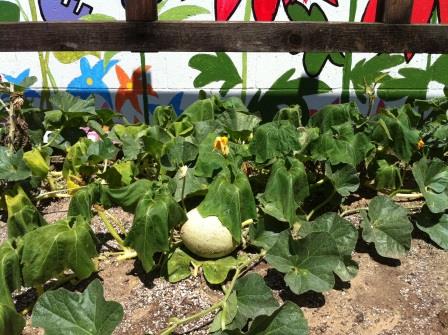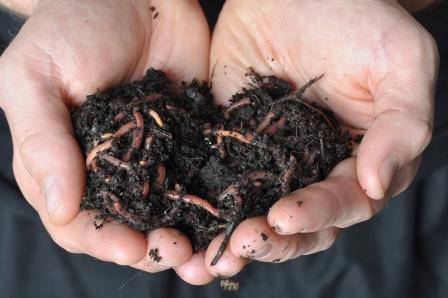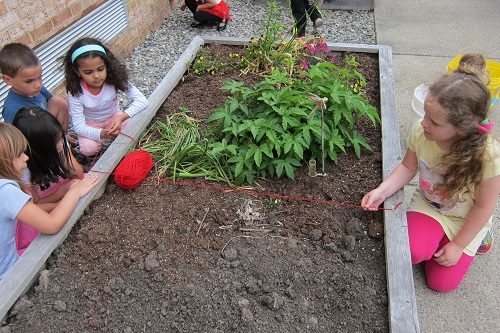 As a kindergarten teacher and chair of the Garden Committee at Coles Elementary School in Manassas, Virginia, I wanted to design a service-learning project that would ignite students’ learning in science, math, and English, while at the same time teaching valuable life lessons.
As a kindergarten teacher and chair of the Garden Committee at Coles Elementary School in Manassas, Virginia, I wanted to design a service-learning project that would ignite students’ learning in science, math, and English, while at the same time teaching valuable life lessons.
The environmental goal of our school is to explore real-world problems and become a community of environmentally-minded thinkers. When students noticed soil erosion from trees that had been removed for new construction on the school grounds, we brainstormed ways to solve this problem. With the help of a Project Learning Tree GreenWorks! grant, I devised and implemented a school-wide plan of action.
For more than 25 years, Project Learning Tree has been awarding GreenWorks! grants to schools and organizations for projects that support children’s learning, ideas, actions, and voices about the environment. The grant given last year to Coles Elementary School sparked science learning across all grade levels as students investigated the value of trees and took action to stop soil erosion on their school grounds.
Plan of Action
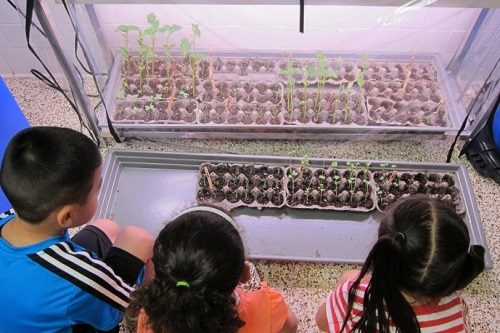
The plan involved 480 students across all grade levels with a multidisciplinary approach to learning. Following are a few highlights:
- Preschool, kindergarten, and first grade students learned what plants need to grow and the life cycle of plants by growing seedlings and planting them in our school gardens. Throughout the year, they observed patterns in plants and seasonal changes in the garden. They also observed trees and wildlife on the school grounds.
PLT activities in the PreK-8 Environmental Education Activity Guide were a huge hit and enhanced student learning. For example, in Activity #1 The Shape of Things, they experienced the many shapes, sizes, textures, and colors found among plants, and in Activity #16 Pass the Plants they gained new knowledge about the parts of plants we eat through a fun snack activity.
- Second grade students planted hazelnut and chestnut trees. They observed them throughout the seasons and discovered how trees can slow rainwater runoff and reduce soil erosion. They also observed how trees provide food for wildlife. They became good environmental stewards – when a tree was knocked over by wind, they noticed right away and staked it.
We used PLT Activity #31 Plant a Tree, to instruct students on how to properly plant a tree. To help students determine where to plant the trees, we used the simulation in Activity #27 Every Tree for Itself. Activity #21 Adopt a Tree, helped students make observations about their trees and document their findings throughout the seasons.
- T
 hird, fourth, and fifth grade students took part in all aspects of the service-learning project. They assisted with the planting of 100 native trees on Arbor Day. This was a collaborative effort among students, parents, and the broader community.
hird, fourth, and fifth grade students took part in all aspects of the service-learning project. They assisted with the planting of 100 native trees on Arbor Day. This was a collaborative effort among students, parents, and the broader community.
To keep the project momentum going in the winter, students researched designs for bird nesting boxes and bat houses. They had a creative voice in deciding which designs to build. Through this project, students discovered why birds and bats are important pollinators in Virginia and why shelter is necessary for their survival.
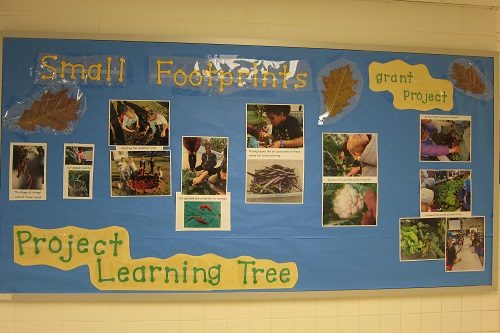 To teach students how to get the word out about their projects, we completed the PLT Activity #60 Publicize It! They learned leadership skills and how to present information to the community in a way that would grab attention.
To teach students how to get the word out about their projects, we completed the PLT Activity #60 Publicize It! They learned leadership skills and how to present information to the community in a way that would grab attention.
To help students learn important concepts about ecosystems, we used Activity #22 Trees as Habitats, Activity #30 Three Cheers for Trees, and Activity #46 School Yard Safari. These activities reinforced the value of trees in reducing soil erosion and providing habitat for wildlife.
Advice to Others
Establish a garden committee made up of staff members, students, parent volunteers, and local experts. A garden committee is important to help divide the work and involve the community.
Leverage the PLT GreenWorks! grant money through community partnerships. We involved our PTA, Arbor Day Foundation, Master Gardeners from Cooperative Extension, 4-H, and other local community groups who provided labor and expert advice. The Arbor Day Foundation donated 50 trees for planting and we obtained reduced prices for materials from local stores.
Benefits of the Project
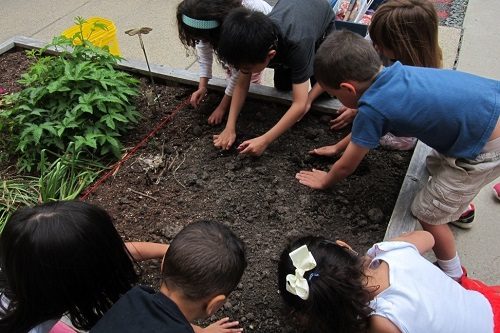
We taught life skills through tree planting and gardening. Students learned responsibility by caring for the plants, learned how to communicate and compromise with each other, gained leadership skills, and developed self confidence. They also developed skills of observation as they watched interactions among plants, animals, soil, and weather.
We improved student health by spending time outdoors and providing fresh vegetables for them to eat from the garden. Almost 40 percent of our school population is economically disadvantaged and many of our families contend with food scarcity. Learning to garden at school and extending that to their home through the container gardens allowed many students to eat fresh vegetables that they planted for the first time.
Celebrating our Success
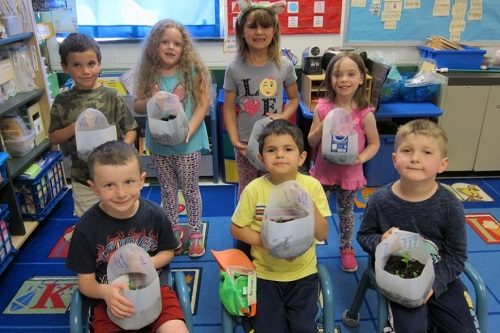
Reflecting on our project, we saw that it helped students:
- Develop critical-thinking skills
- Learn how to apply science concepts
- Develop leadership and communication skills
- Connect with nature
- Discover how they can improve their environment
To celebrate our success, we provided tours of our gardens and showed off our various projects on the school grounds. At our spring carnival, participants could select their favorite vegetable seedlings to plant in a container garden to take home. What started out as an effort to stop soil erosion blossomed into a school-wide initiative across all grades and the community!


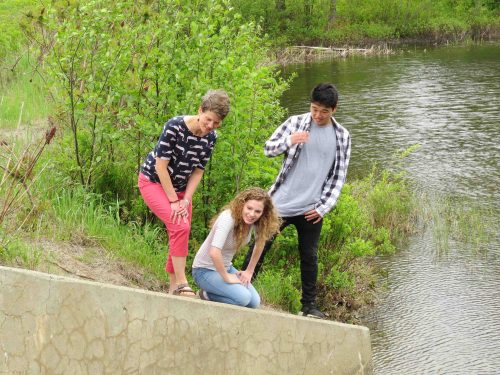
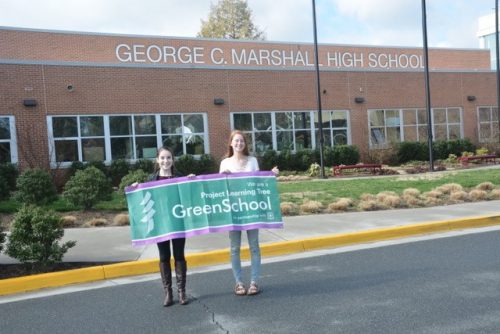
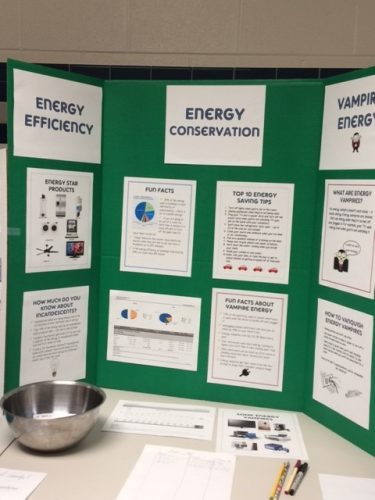
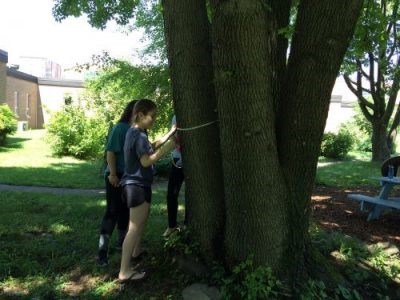
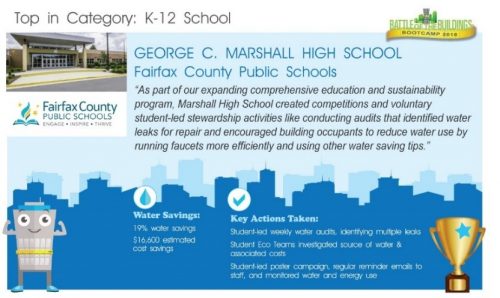
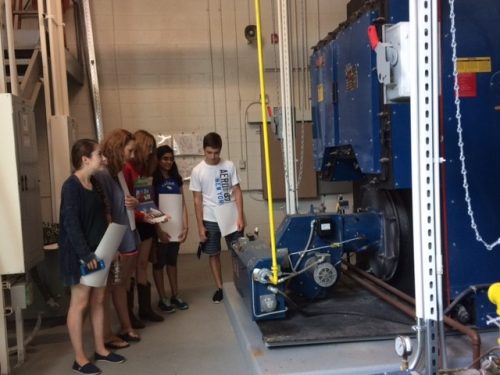
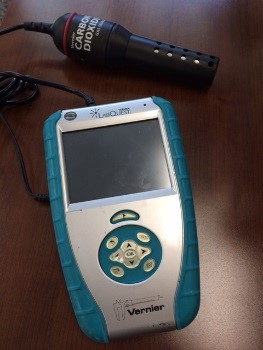
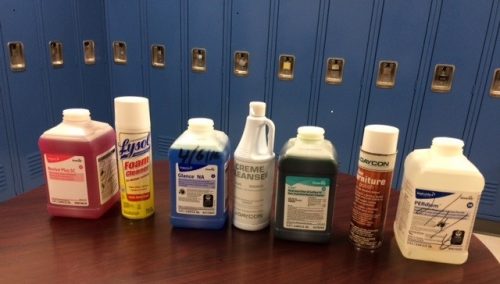
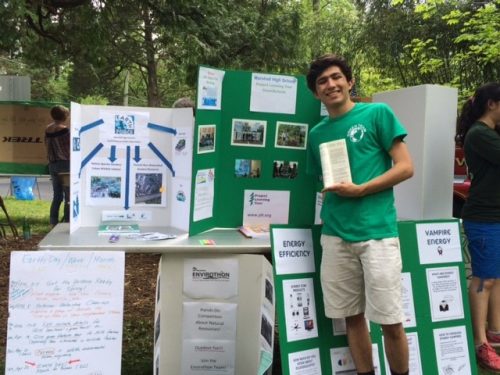
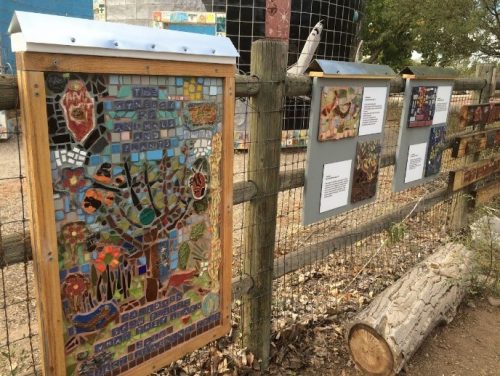
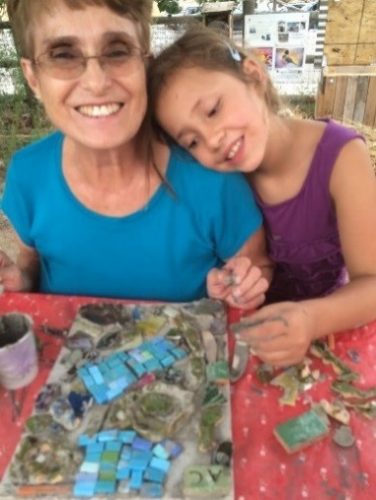 Some of the funding from the grant was used to purchase seeds and plants, pavers, and sets of gloves and trowels for the garden’s volunteer caretakers—children and their families who gather once a week as part of an afterschool family program to learn how to plant and take care of the Kiwanis Learning Garden. In January last year, 16 children (ages 4-11) each chose to study an animal found in the garden. They made puppets using cloth and clay, and created a show to share their research about animal-plant relationships. In the summer weeks they created mosaics. In October, the remaining grant funds helped pay for panels featuring the children’s reports and mosaics. These were installed outdoors for a permanent art exhibit for the benefit of the public who use the garden.
Some of the funding from the grant was used to purchase seeds and plants, pavers, and sets of gloves and trowels for the garden’s volunteer caretakers—children and their families who gather once a week as part of an afterschool family program to learn how to plant and take care of the Kiwanis Learning Garden. In January last year, 16 children (ages 4-11) each chose to study an animal found in the garden. They made puppets using cloth and clay, and created a show to share their research about animal-plant relationships. In the summer weeks they created mosaics. In October, the remaining grant funds helped pay for panels featuring the children’s reports and mosaics. These were installed outdoors for a permanent art exhibit for the benefit of the public who use the garden.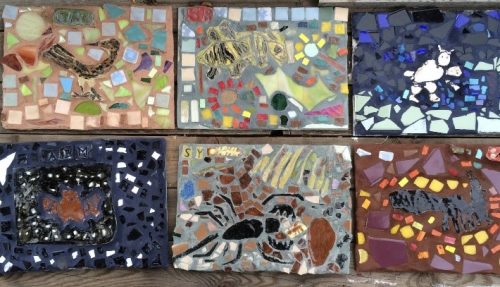 The Garden Programs Coordinator used several activities from Project Learning Tree’s
The Garden Programs Coordinator used several activities from Project Learning Tree’s 
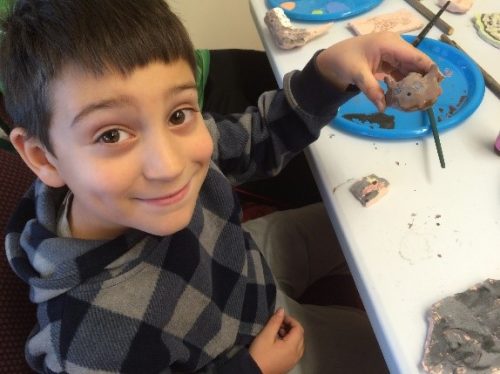

 Here are some tips from Cirrelda Snider-Bryan who reflected on what made their project such a success:
Here are some tips from Cirrelda Snider-Bryan who reflected on what made their project such a success: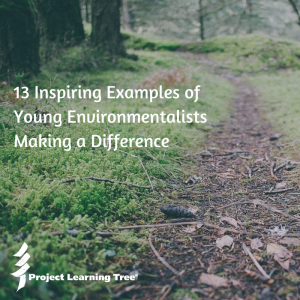 When we were young, it was easy to think that we’d have to wait until we’re older to make a difference since most of our role models were adults. As young environmental activist Ta’Kaiya Blaney said, “I always wanted to make a difference, but it was always along the lines of…when I grow up. It’s sad that it has to be this way but I realize I don’t have time to grow up before I want to make a change.”
When we were young, it was easy to think that we’d have to wait until we’re older to make a difference since most of our role models were adults. As young environmental activist Ta’Kaiya Blaney said, “I always wanted to make a difference, but it was always along the lines of…when I grow up. It’s sad that it has to be this way but I realize I don’t have time to grow up before I want to make a change.”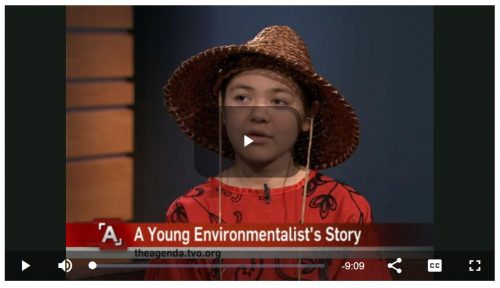
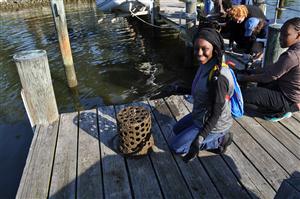
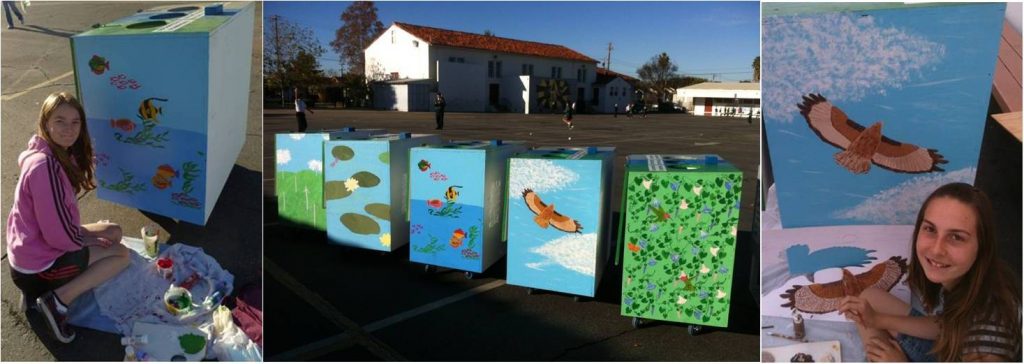 St. Michael School middle school students in Livermore, Ca., were eager to address the issue of waste on campus. After receiving a GreenWorks grant from Project Learning Tree, they were able to implement a school-wide recycling program. They started by conducting a waste audit and established a plan to recycle different types of materials.
St. Michael School middle school students in Livermore, Ca., were eager to address the issue of waste on campus. After receiving a GreenWorks grant from Project Learning Tree, they were able to implement a school-wide recycling program. They started by conducting a waste audit and established a plan to recycle different types of materials.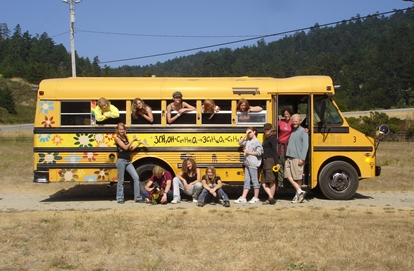 A few dozen high school students at City Academy in Salt Lake City, Utah, converted their school bus to run on biodiesel. Students started discussing alternative fuels while studying global warming and pollution. That’s when they came up with the idea of making their own biodiesel fuel from used vegetable oil for our school bus to reduce their school’s CO2 emissions. They received a start-up grant from Toshiba and a GreenWorks grant from Project Learning Tree to work on the project.
A few dozen high school students at City Academy in Salt Lake City, Utah, converted their school bus to run on biodiesel. Students started discussing alternative fuels while studying global warming and pollution. That’s when they came up with the idea of making their own biodiesel fuel from used vegetable oil for our school bus to reduce their school’s CO2 emissions. They received a start-up grant from Toshiba and a GreenWorks grant from Project Learning Tree to work on the project.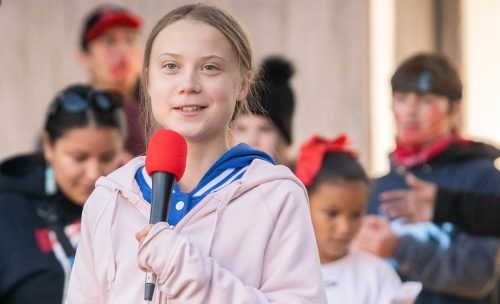
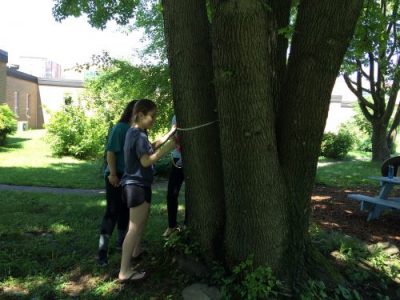
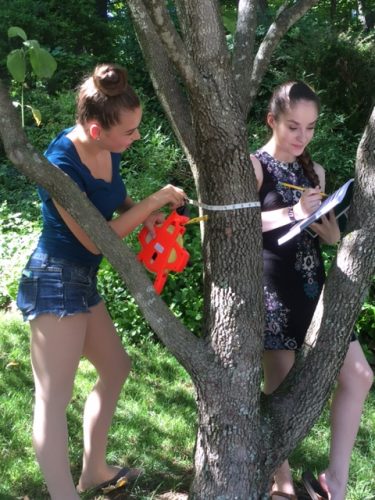
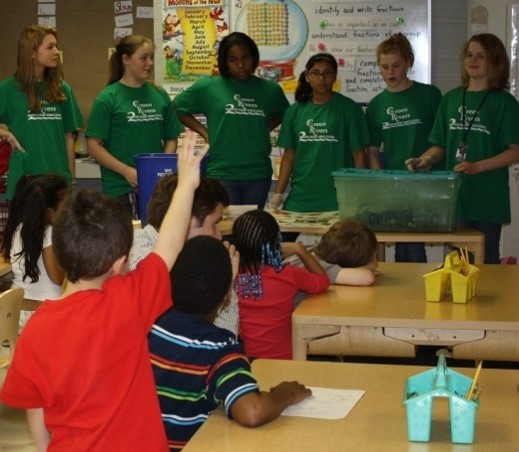
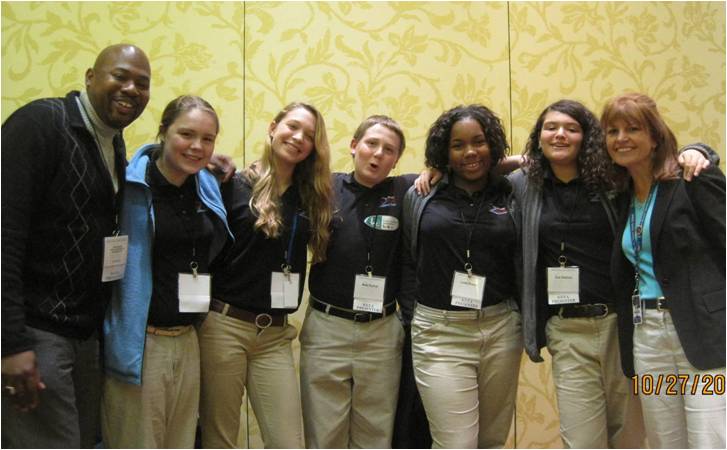 The students prepared and delivered a presentation on their work through the GreenSchools program at a meeting of the National Science Teachers Association in Hartford, CT.
The students prepared and delivered a presentation on their work through the GreenSchools program at a meeting of the National Science Teachers Association in Hartford, CT.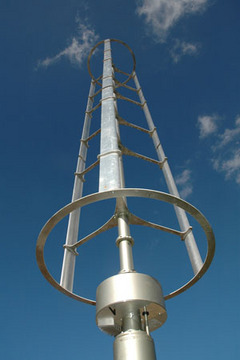 Developing an audacious action plan to save energy
Developing an audacious action plan to save energy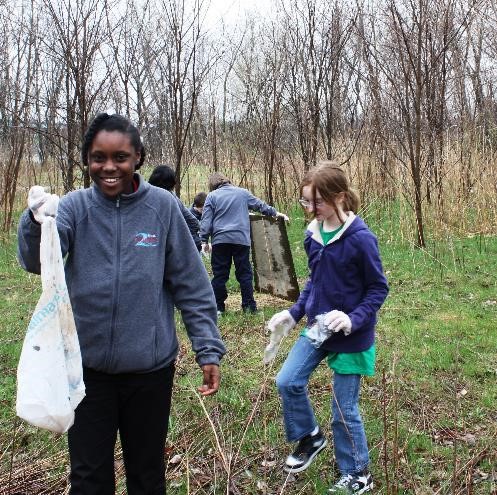 The students developed a lively, humorous skit and YouTube video presentation about the damage cause by invasive species like the emerald ash borer and the Asian longhorned beetle. They used their skit —complete with beetle costumes—to teach younger students and community members about the threat the pests pose, as well as how to spot the early signs of tree damage. When they began, neither insect had entered Connecticut, but both have since been found.
The students developed a lively, humorous skit and YouTube video presentation about the damage cause by invasive species like the emerald ash borer and the Asian longhorned beetle. They used their skit —complete with beetle costumes—to teach younger students and community members about the threat the pests pose, as well as how to spot the early signs of tree damage. When they began, neither insect had entered Connecticut, but both have since been found.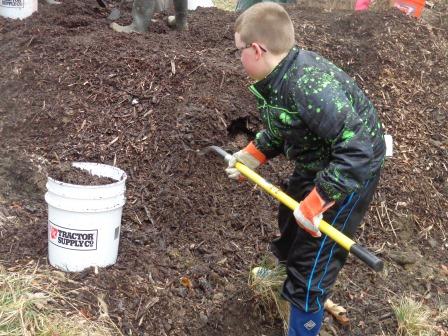 In Westville, Indiana, Purdue University North Central (PNC) early childhood education teacher candidates helped plan and build a children’s garden at Westville Little School to give preschoolers a place to explore the natural world and learn about nature. To start the project, PNC students participated in a PLT training to help them understand the importance of outdoor classrooms as a learning tool for young students.
In Westville, Indiana, Purdue University North Central (PNC) early childhood education teacher candidates helped plan and build a children’s garden at Westville Little School to give preschoolers a place to explore the natural world and learn about nature. To start the project, PNC students participated in a PLT training to help them understand the importance of outdoor classrooms as a learning tool for young students.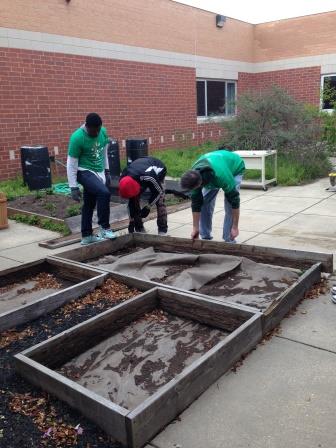 With their Greenworks! grant, students at Thomas Stone High School in Waldorf, Maryland made their school’s outdoor spaces more accessible and enjoyable for community members. They took charge mapping and reconstructing sections of the running trail, applying their math, science, and landscaping skills. They created posters and PSAs and recruited volunteers to help with events such as Zumba in the Forest and a 9-11 Memorial 5K Walk/Run to showcase their project and get community members outside and participating in outdoor activities.
With their Greenworks! grant, students at Thomas Stone High School in Waldorf, Maryland made their school’s outdoor spaces more accessible and enjoyable for community members. They took charge mapping and reconstructing sections of the running trail, applying their math, science, and landscaping skills. They created posters and PSAs and recruited volunteers to help with events such as Zumba in the Forest and a 9-11 Memorial 5K Walk/Run to showcase their project and get community members outside and participating in outdoor activities. 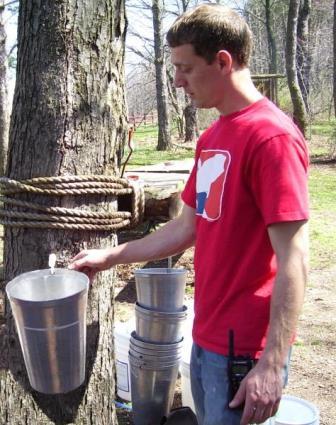 Elementary, middle, and high school students at St. Stephen’s Academy in Zelienople, western Pennsylvania worked together to collect sap and produce maple syrup for an annual Rip N’ Dip Festival where the community comes together for pancakes and maple syrup tasting and to learn about the maple sugaring process. Special education students from all grade levels participated in a variety of hands-on, outdoor activities throughout the six-month project.
Elementary, middle, and high school students at St. Stephen’s Academy in Zelienople, western Pennsylvania worked together to collect sap and produce maple syrup for an annual Rip N’ Dip Festival where the community comes together for pancakes and maple syrup tasting and to learn about the maple sugaring process. Special education students from all grade levels participated in a variety of hands-on, outdoor activities throughout the six-month project. 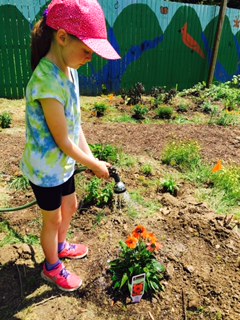 The Mountain Stewardship & Outdoor Leadership School in Morgantown, West Virginia works with Morgantown Learning Academy to provide K-8 students with in-class environmental education programs and after-school outdoor programs focused on nature awareness, stewardship, and leadership skills. With the help of a GreenWorks! grant, a student-led project explored the declining population of the Monarch butterfly and resulted in a new butterfly garden in the school’s Wild Yards area. The garden has received designations as a “Monarch Waystation” from Monarch Watch, and as a “Certified Schoolyard Habitat” from the National Wildlife Federation.
The Mountain Stewardship & Outdoor Leadership School in Morgantown, West Virginia works with Morgantown Learning Academy to provide K-8 students with in-class environmental education programs and after-school outdoor programs focused on nature awareness, stewardship, and leadership skills. With the help of a GreenWorks! grant, a student-led project explored the declining population of the Monarch butterfly and resulted in a new butterfly garden in the school’s Wild Yards area. The garden has received designations as a “Monarch Waystation” from Monarch Watch, and as a “Certified Schoolyard Habitat” from the National Wildlife Federation.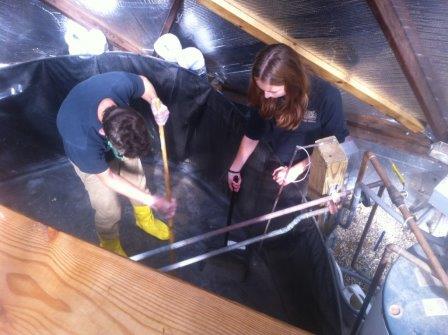 Dead catfish. Electrical power failures. Not everything went exactly as hoped for Kris Galoci’s high school students at Grand Traverse Academy (GTA), a charter school in Traverse City, Michigan.
Dead catfish. Electrical power failures. Not everything went exactly as hoped for Kris Galoci’s high school students at Grand Traverse Academy (GTA), a charter school in Traverse City, Michigan.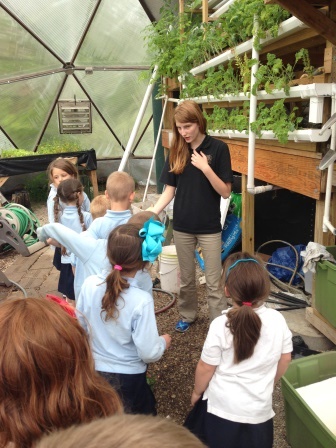 Students in different grades can enroll in her environmental studies course, with older students taking on leadership roles. In addition to working on the system together, small groups design and develop projects using the system. For example, 11th grader Andrew Lasko built a vertical growing wall and flood drain system as a way to minimize the environmental footprint.
Students in different grades can enroll in her environmental studies course, with older students taking on leadership roles. In addition to working on the system together, small groups design and develop projects using the system. For example, 11th grader Andrew Lasko built a vertical growing wall and flood drain system as a way to minimize the environmental footprint.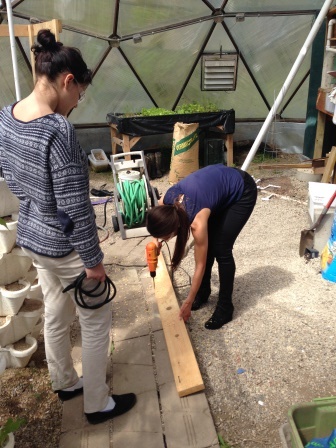 “Kids like project-based learning, but it has its challenges,” Galoci acknowledged. A typical 50-minute class period can present time-management issues, and she said her students often spend parts of their lunch periods or after school in the greenhouse.
“Kids like project-based learning, but it has its challenges,” Galoci acknowledged. A typical 50-minute class period can present time-management issues, and she said her students often spend parts of their lunch periods or after school in the greenhouse.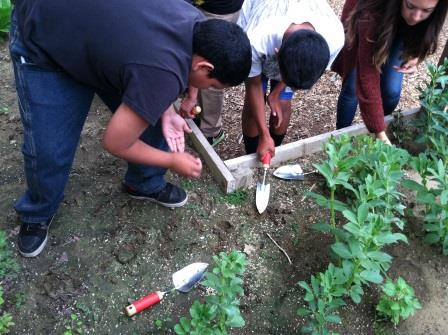 After two years in the making, the sustainable school garden at Ladera Vista Junior High is in full swing.
After two years in the making, the sustainable school garden at Ladera Vista Junior High is in full swing.